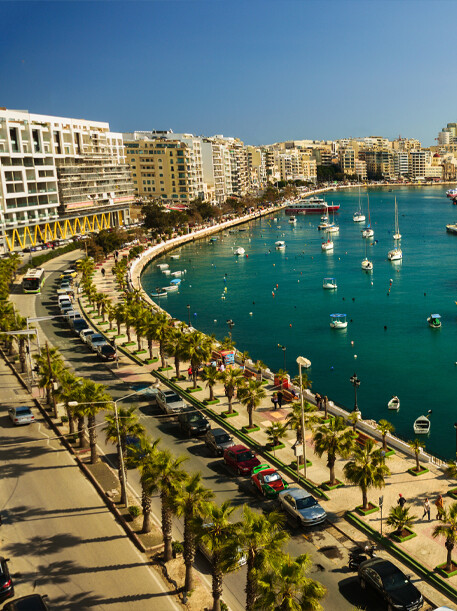A Brief History of Sliema
and dive deeper
Immerse yourself in history when staying at a hotel in Sliema.
Many moons ago, the seaside town of Sliema was a quiet village in the Northern Harbour region of Malta, where the only sound that could be heard was a fisherman’s hook flinging into the sea. A successful morning of fishing would build up an appetite for the Sliema locals, and the catch of the day would be carried back to the fisherman’s home, ready to be cooked up into a fresh meal.
As time went by, Sliema evolved into the bustling, cosmopolitan town that we know today. If you pay attention, however, you will notice that Sliema’s peaceful past can be observed in many ways. Consider staying at one of the hotels in Sliema to be able to experience the subtle beauty of the town.
So, how did Sliema develop from a laid-back fishing village to a main destination for entertainment and leisure activities? Let’s take a look at the town’s history…
The Knights of St. John in Malta
If you’re interested in the history of the Maltese Islands, you will have probably heard about the epic battle that took place between the Ottoman Empire and the Order of the Knights of St John. The Turks attempted to invade the Maltese Islands to use the lands a military base, from where they could continue to conquer more countries in Europe.
But, before the Great Siege of 1565, the area of Sliema was used as a camp centre for Turkish troops, called ‘il–Qortin’. Dragut, the ruthless corsair who led the Turkish troops, met his death at the tip of Sliema, after being killed by a bombardment from Fort St Elmo. The place where Dragut died is sometimes referred to as Dragut Point, which is where Fort Tigné was later built by the Knights of St John.
 Snapshot of Sliema in the current times.
Snapshot of Sliema in the current times. Fond Ghadir Beach, Sliema.
Fond Ghadir Beach, Sliema.The British
During the years when Malta was a British colony, Sliema underwent quite a transformation. It was during this period that the town was named ‘Sliema’, which means ‘peace’ in Maltese. In the year of 1855, the small fishing village developed into a town after the Our Lady Star of the Sea (Stella Maris) church was opened to the public. The population continued to grow and, by the second half of the 19th century, Sliema started to be used as a summer residence for the wealthier inhabitants of Valletta.
They would travel to their summer homes using the Valletta to Sliema ferry, and spend the long days lounging in the elegant villas lining the Sliema promenade. Up until this day, you can still see the strong influence that the British had on the architecture in Sliema and the neighbouring towns of Gzira and St Julians. The British continued to use the Tigne Fort and built more structures to protect the island from invasion, including the Sliema Point Battery (1872-76), Cambridge Battery (1878-86) and Garden Battery (1889-94).
Sliema Malta in modern times
Nowadays, Sliema is a bustling town, full of shops, cafés and restaurants. You’ll also come across numerous hotels in Sliema, from where you will be able to explore the town like a local.
When staying in Sliema, you won’t be short of choice when it comes to dining. There are a number of Sliema restaurants that serve cuisines from all over the world, such as the TemptAsian fusion restaurant located on the 9th floor of AX The Palace, overlooking the magnificent Valletta skyline.
In Sliema, you will also be able to shop till you drop, with fantastic designer outlets located in the high street and at The Point shopping mall. You can even explore the religious roots of the town through the beautiful churches scattered around the streets. With so many things to do here, staying at a hotel in Sliema is a great choice to learn about Malta’s history, while also exploring the rest of the island. Although Sliema is one of the main commercial districts in Malta, the peaceful past of the old fishing village can still be felt when staying in the quiet core of the town!
 Superior Room at 4-star AX The Victoria Hotel in Sliema Malta. Photo credits go to Viewing Malta.
Superior Room at 4-star AX The Victoria Hotel in Sliema Malta. Photo credits go to Viewing Malta.